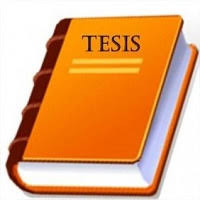
Thesis
Apatite Formation on Zirconia (Y-TZP) Coated with Carbonate Apatite in Simulated Body Fluid
Various bioactive calcium phosphates such as hydroxyapatite (HA) and carbonate apatite
(CO3 Ap) have been widely studied due to their ...
-
Code CallNo Lokasi Ketersediaan Th-824 824 617.69 Yum A Sekeloa (Prostodonsia) Tersedia namun tidak untuk dipinjamkan - No Loan -
Perpustakaan Fakultas Kedokteran GigiJudul Seri -No. Panggil 617.69 Yum APenerbit PPDGS Prostodonsia Unpad : FKG UNPAD SEKELOA., 2020 Deskripsi Fisik ii, 10 hlm; ilus; 21x30cmBahasa IndonesiaISBN/ISSN 160221170003Klasifikasi 617.69Tipe Isi -Tipe Media -Tipe Pembawa -Edisi -Subyek Info Detil Spesifik -Pernyataan Tanggungjawab Astrie Yumeisa ( Author ) -
Various bioactive calcium phosphates such as hydroxyapatite (HA) and carbonate apatite
(CO3 Ap) have been widely studied due to their biocompatibility and osteoconductivity when
implanted into bone defects. CO3 Ap has the ability to adapt bone structure and induce bone
regeneration; so that it can be categorized as resorbable bioactive materials. CO3 Ap induced much
stronger response such as cell adhesion and actin ring formation to osteoclast-like cells rather than
HA. The aim of this study is to evaluate the bioactivity on zirconia (Y-TZP) coated with CO3 Ap using
simulated body fluid (SBF). Twenty Y-TZP ZrO2 disks with a 12-mm diameter and 1-mm thickness
were employed as the samples. The disks were divided into two groups which the control group
without CO3 Ap coating and tested group with CO3 Ap coating. Disks samples are dipped into CO3 Ap
suspension for one minute and stored in 37°C incubator for 24 hours. The disks were soaked in SBF
for 1, 4, and 7 day(s) at 36.5°C. The obtained apatite crystals were characterized by scanning electron
microscopy (SEM). It was found that the apatite formation on the tested group was greater than the
control group. The EDS pattern showed the presence of Ca and P on the control and tested group after
SBF soaking, which indicate the apatite deposition on the disks’ surface. However, the Ca and P on
the tested group was higher compared to the control group. The formation of apatite layer on the
disks’ surface is bioactivity indicator of CO3 Ap. -
Tidak tersedia versi lain
-
Silakan login dahulu untuk melihat atau memberi komentar.






